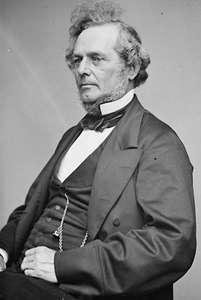Hoe, Richard March
Richard March Hoe inventor estadounidense, procedente de una familia dedicada a la producción de prensas de impresión, desarrolló y fabricó la prensa rotativa,. Richard revolucionó los procesos de impresión, introduciendo un cilindro giratorio que mejoró la velocidad, cantidad y calidad del producto, desbancando e inhabilitando la prensa plana.
Àrea:
Subàmbit:
Referència:
The Editors of Encyclopaedia Britannica. (21 de abril de 2018). Encyclopedia Britannica. Recuperado el 10 de mayo de 2018, de Richard March Hoe: https://www.britannica.com/biography/Richard-March-Hoe
Vincle:
Imatge:

Text:
Richard March Hoe, (born Sept. 12, 1812, New York, N.Y., U.S.—died June 7, 1886, Florence, Italy), American inventor who developed and manufactured the first successful rotary printing press.
He was the son of Robert Hoe (1784–1833), an English-born American mechanic, who, with his brothers-in-law Peter and Matthew Smith, established a factory for the production of printing presses in New York City. Richard entered R. Hoe and Company in 1827 and on his father’s death became head of the firm.
Like his father, he had considerable inventive genius and made continual improvements in contemporary cylinder presses to increase the speed, quantity, and quality of output. The application of his ideas revolutionized printing processes. He discarded the old flatbed press, placing the type on a revolving cylinder, a model eventually developed into the Hoe rotary, or “lightning,” press, patented in 1847. First used by the Philadelphia Public Ledger in 1847, it produced 8,000 sheets per hour printed on one side. It was further improved under the name of the Hoe web perfecting press, which was first used by the New York Tribune and produced 18,000 sheets an hour, printed on both sides. Hoe’s press enabled publishers to satisfy the increasing demand for newspapers.
